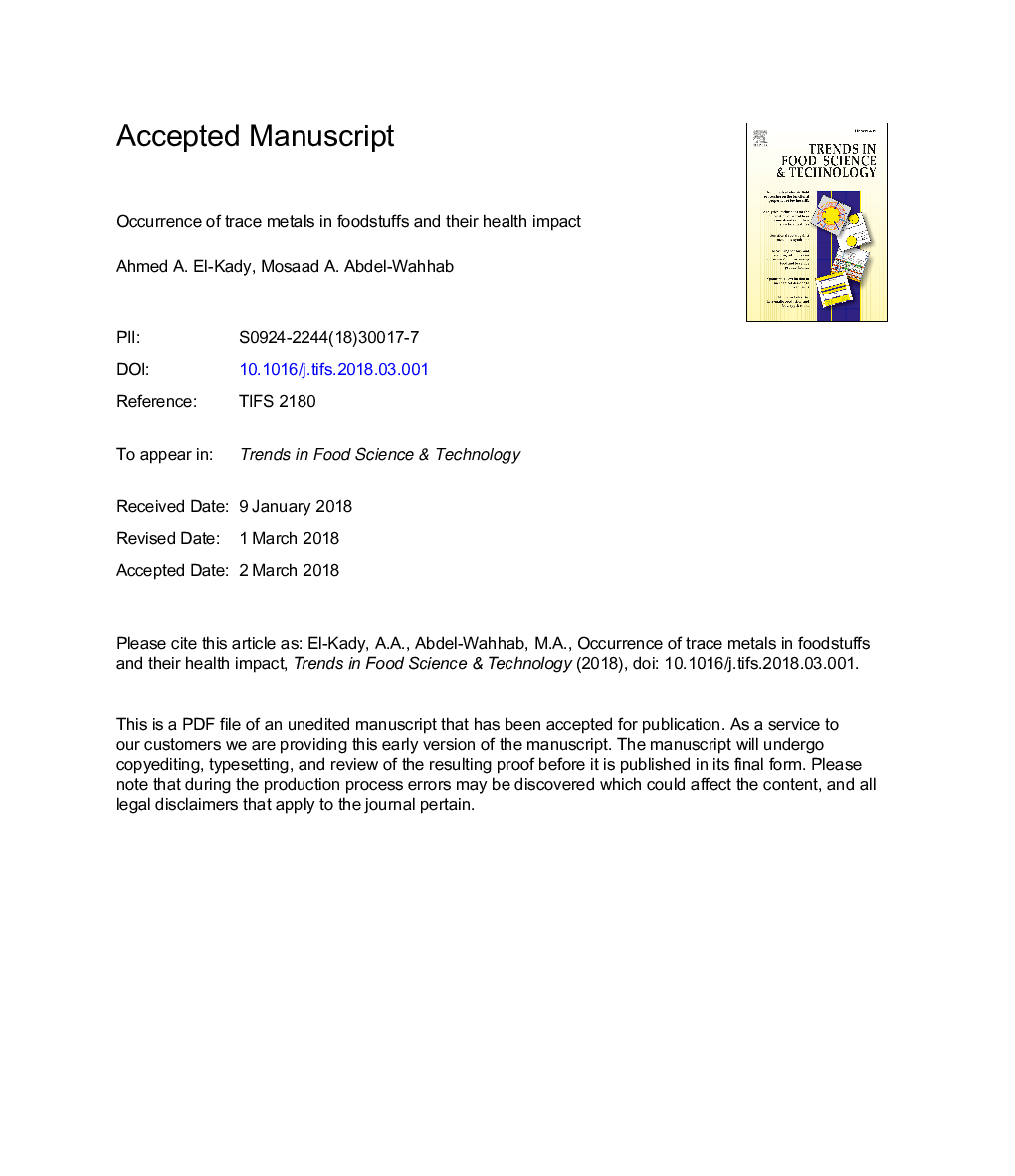| Article ID | Journal | Published Year | Pages | File Type |
|---|---|---|---|---|
| 8428246 | Trends in Food Science & Technology | 2018 | 39 Pages |
Abstract
Many criteria are defined to identify heavy metals based on their specific gravity, weight and atomic number, chemical properties and their toxicity, therefore the heavy metals term is still very loose. Dietary exposure is a significant route for trace metals to the humans and constitutes about 90% of exposure. Long term exposure to metals via food consumption, drinking water or other occupational sources leads to serious problems, e.g., hepatotoxicity, kidney failure and neurotoxicity. Analysis of the current situation concluded that the concentrations of heavy metals declined over the years, but they are still hot spots suffering from domestic wastes, agrochemicals like pesticides, fertilizers and industrial wastes. Due to the contamination sources in those hot spots, levels of some metals exceeded the approved permissible limits and become sources of severe problems to humans. Almost comprehensive hazard assessment of these metals is missing due to insufficient data corresponding to body burden for groups potentially exposed to high concentration of metals and their concentrations in foodstuffs.
Related Topics
Life Sciences
Agricultural and Biological Sciences
Food Science
Authors
Ahmed A. El-Kady, Mosaad A. Abdel-Wahhab,
